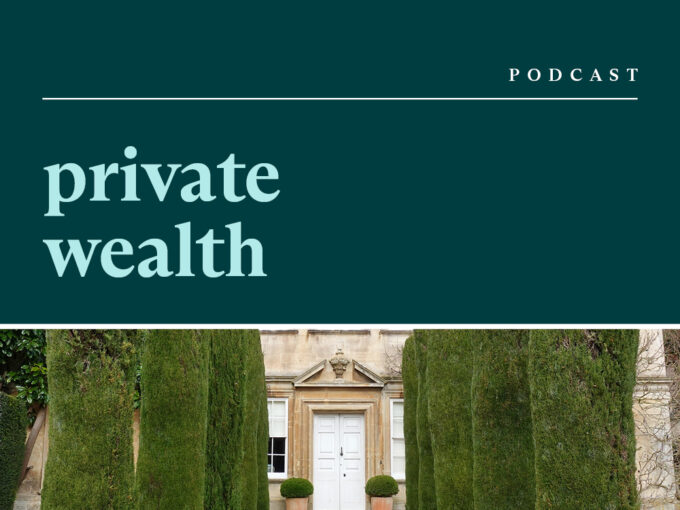In this article we examine the changes impacting individuals announced by the Chancellor Rachel Reeves in the 2024 Autumn Budget.
As previously announced, the government is pressing ahead with reforming the taxation of non-doms – abolishing the remittance basis of taxation in favour of a regime based on residence. For more on these changes see our Budget changes for non-doms article.
Capital gains tax rates are increasing from Budget day, with main rates increasing from 10% and 20% to 18% and 24% respectively. Purchasers of second homes will also face an increased rate of SDLT and, as has been previously announced, private school fees will be subject to VAT from January 2025, increasing the overall cost to parents.
Changes to inheritance tax (IHT) have also been announced, and though the nil rate and residence nil rate bands will remain unchanged, Agricultural Property Relief (APR) and Business Property Relief (BPR) will be reformed from 6 April 2026. 100% relief will continue to be available for the first £1 million of agricultural and business property, with 50% relief applying to amounts above this. Unused pension funds and death benefits payable from a pension will now also be brought into a person’s death estate for IHT purposes from 6 April 2027.
You can read the detail behind each of the announcements below:
In the lead up to the UK Budget, speculation regarding changes to CGT were rife, particularly as this is seen as a tax on the wealthiest among the UK population and the government made it clear that those with the broadest shoulders would bear the heaviest burden of any tax rises.
The changes to CGT were less severe than had perhaps been expected, and this may be seen as the government’s realisation of the need to foster a positive environment for entrepreneurship and encourage the necessary investment and risk taking to incentivise growth in the economy. Some changes to CGT have been introduced with immediate effect.
The lower rate of CGT, which applies to capital gains realised by individuals to the extent that they fall within their basic rate band (currently for individuals with income levels of less than £50,270), will be increased from 10% to 18% for disposals made on or after 30 October 2024. There will also be an increase in the higher rate of CGT, which applies to any excess capital gains realised by individuals not falling within their basic rate band, or for any capital gains realised by trustees, from 20% to 24% for disposals made on or after 30 October 2024.
Rates of CGT for disposals of residential property, will remain unchanged at 18% and 24% respectively. This will equalise the rates of CGT applicable to the sale of all assets from 30 October 2024, and reduce the number of different rates of CGT that could potentially apply to asset disposals.
Under specific anti-forestalling provisions, capital gains realised on disposals made under arrangements entered into before the date of the UK Budget, and where the contract for sale was unconditional but uncompleted before 30 October 2024, will be charged to tax at the new rates of CGT applying from 30 October 2024.
The Chancellor has now committed to preserving Business Asset Disposal Relief (BADR) and Investors’ Relief (IR). These are particularly beneficial measures of CGT relief available to entrepreneurs and those who invest in businesses, which enables capital gains on the sale of shares in, or in the case of BADR also an interest in, a trading business that meets the relevant conditions, to be taxed at a lower rate of CGT.
- There will also be no changes to the cumulative lifetime limit of capital gains that are eligible for BADR, which will remain at £1 million, however the cumulative lifetime limit of capital gains that are eligible for IR will be reduced from £10 million to £1 million from 30 October 2024 (taking into account the value of relief claimed in respect of qualifying disposals made prior to 30 October 2024 under the previously higher lifetime limit).
- For disposals which qualify for either BADR or IR, the rate of CGT applying to such gains will be increased from 10% to 14% for disposals made on or after 6 April 2025, and then from 14% to 18% for disposals made on or after 6 April 2026.
- Similar anti-forestalling provisions will apply the new rates of CGT to capital gains realised on disposals which are eligible for BADR and IR, where the contract for sale is made from 30 October 2024 to 5 April 2026 but completed from 6 April 2025.
There are also some important anti-forestalling measures that will apply to reorganisations and exchanges of a company’s share capital before 30 October 2024, where the shareholder makes the appropriate election to disapply the CGT reorganisation rules. These impact both the rate of CGT which is applied to the capital gain being crystallised if the shareholder continues to meet the conditions for BADR on 30 October 2024, and the cumulative lifetime limit applicable to the crystallised gain where the shareholder continues to meet the conditions for IR on 30 October 2024, where in both cases the disposal will be treated as taking place on the date on which the election is made.
There will be no changes to way in which capital losses, the annual exempt amount (currently £3,000), and any unused basic rate band, may be set against capital gains, with these continuing to be applied in the most beneficial manner as under current rules. Similarly, the current 60-day reporting and tax payment requirements for capital gains realised on the disposal of residential property will continue to apply in the same way as they do currently.
There were also changes made to the rate of CGT applying to ‘carried interest’ gains realised by private equity executives, and these are covered below.
The Chancellor has announced that the CGT rate for all carried interest gains will increase to 32%, applying to carried interest arising on or after 6 April 2025. There will be no reduced rate for carried interest within the basic rate, unlike other assets subject to CGT. This is a temporary measure ahead of wider reforms that will apply from the following tax year. From 6 April 2026 a specific tax regime for carried interest will be introduced, moving it from the CGT framework to income tax. All carried interest will be taxed as trading profits and therefore subject to income tax and Class 4 NIC. However, where the amounts received are considered ‘qualifying’ carried interest the profits subject to tax will be reduced to 72.5% of the total. This will reduce the effective tax rate for an additional rate taxpayer to 32.625% plus in most cases 2% class 4 NIC (34.075% combined). This change could therefore be considered somewhat cosmetic, but does deal with some of the negative perceptions about carried interest representing remuneration rather than true capital gains.
The current income-based carried interest rules (IBCI) will continue. Where they apply, the relevant carried interest will not be considered ‘qualifying’ and consequently not benefit from the reduction to 72.5%. In broad terms, the current IBCI rules apply where the weighted average holding period of the investments to which a carried interest entitlement relates is less than 40 months. There is currently an exemption from the IBCI rules where the carried interest was acquired by an employee. This exemption will be removed, although it is not clear whether this will affect carried interest which has already been acquired.
The new carried interest regime is expected to retain several definitions and anti-avoidance provisions from the current legislation and will continue to apply only where the individual performs investment management services for an investment scheme.
The reclassification of carried interest as trading income may have some additional consequences, for example when claiming loss relief or relief under a double tax treaty. It has been confirmed that qualified carried interest which relates to non-UK investment management services will be able to utilise the new FIG regime (which is replacing the current remittance basis regime).
The current anti-avoidance rules for disguised investment management fees (DIMF) will be retained and will continue to operate alongside these new rules. However, the government is consulting on additional conditions for carried interest to be ‘qualifying’. These might include an aggregate minimum co-investment by the fund managers, or a minimum holding period for carried interest (in addition to the holding period requirement in the IBCI rules) as areas they are looking at. Specific targeted amendments to the legislation are also expected to ensure that the IBCI rules do not adversely impact private credit funds.
It had been hoped that the government could include some element of grandfathering or transitional provisions for existing fund structures that were established under the current rules. However, they have stated that these are not being considered.
The Chancellor has announced a range of measures for IHT in her first Budget speech.
The nil rate band for IHT, which has been frozen at £325,000 since 6 April 2009. The threshold was set to remain fixed until April 2028, but there will be no increases until April 2030, after which the band should begin to increase with inflation. The residence nil rate band will be frozen for the same period at £175,000. The expected inflation in asset values during those two years means that a further 4,500 estates will likely fall within the scope of IHT than would otherwise have done so.
Pension funds which have not been drawn down or converted into an annuity by an individual are currently exempt from IHT on death, as are death benefits from pension schemes. From April 2027 pension funds and death benefits will be aggregated with an individual’s estate and subject to IHT on a taxpayer’s death. Pension scheme administrators will need to report and pay IHT. HMRC have opened a 12-week consultation to consider the implementation of these changes. It will be vital to ensure that these valuable assets are factored in when considering the IHT exposure when undertaking estate planning.
From 6 April 2025, in line with the changes to income tax and capital gains tax for non-UK domiciled individuals, an individual’s liability to IHT will be based upon long term residence status not their domicile position. Further details can be found in our separate article.
The Chancellor announced significant changes to both Agricultural Property Relief (APR) and Business Property Relief (BPR). APR applies to land and property used for agricultural purposes while BPR applies to business assets, including partnership interests and shares in unquoted companies, providing they are not mainly carrying on investment activities.
From April 2026 there will be two levels of relief available. The first £1 million of value will be fully relieved at 100%. Any additional agricultural value or qualifying business property within the estate will be relieved only at 50% of the value. This means an effective rate of tax of 20% on values above that £1 million threshold.
Assuming ‘typical’ agricultural land has a value in the region of £10,000 per acre then all farms with an area in excess of 100 acres will now be within the scope of IHT to some extent. It will be interesting to see whether the change in this regime results in more lifetime giving of farms and businesses as there was no change announced in the rules for potentially exempt transfers and capital gains tax holdover for trading and agricultural property relief.
In addition, the value of shares which are not listed on a recognised stock exchange will only qualify for 50% BPR. The £1 million 100% relief allowance will not be available. This will halve the amount of IHT relief listed included on the Alternative Investment Market (AIM), which currently qualify for 100% relief on their full value.
There are a number of investment management companies who have offered BPR planning portfolios using the AIM market and these portfolios will now have an effective IHT rate of 20% on their value (assuming no nil rate band is available).
While the overall number of deceased estates affected by the changes to APR and BPR are relatively modest, suggested to be around 2,000 estates in the first year, the increase in potential tax liabilities for those affected will be very significant.
A similar limit on APR and BPR will apply to trusts. Under current rules certain trusts are subject to an IHT charge every 10 years. These trusts will be able to claim relief for a total of up to £1 million of APR and BPR qualifying assets. This will apply per trust, but where settlors have set up new trusts on or after 30 October 2024, the £1 million allowance will be divided between them.
To prevent forestalling of these measures where an individual makes a gift during lifetime on or after 30 October 2024 but dies after 6 April 2026, the new rates of relief will apply on any additional IHT payable on the death of the donor, rather than those in force at the time of the gift. Gifts prior to 30 October 2024 are expected to retain the old reliefs.
The current rules which allow the payment of IHT over a 10 year period will remain in place.
Finally, the Chancellor made no changes to the potentially exempt and chargeable lifetime transfer regime, including the seven year rule for lifetime gifts and maintained the headline rate of IHT at 40%, heritage exemption and the exemption for spouses and civil partners.
The ability to pay IHT over ten equal instalments will become very important following the reduction in the rate of relief.
As previously announced by the previous government, APR will be extended to environmental land management from 6 April 2025. This will apply to land managed under agreements approved by the UK and devolved governments, or various approved bodies.
These measures will impact upon taxpayers’ succession planning and target those with more valuable estates. They are expected to raise £2.3 billion per annum once fully implemented. This is on par with the proposed increase in capital gains tax rates, but nothing compared to the £25 billion expected to be raised by the increase in employer national insurance contributions.
It will make it harder for smaller companies to raise capital on AIM. However, it will be a relief that the exemption from IHT for such shares was not abolished completely. It will create extra tax charges on family trusts that own illiquid investments in family businesses. These businesses will need to start budgeting for IHT charges, reducing the amount of capital available for profitable growth and investment.
Stamp Duty Land Tax (SDLT) is a tax paid by a buyer on the purchase of land and property located in England and N. Ireland; SDLT is charged on increasing bands of the purchase price at increasing tax rates. SDLT does not apply to Scotland or Wales where devolved land transaction taxes apply.
Today’s Budget announced the following changes which take effect for purchases completing on or after 31 October 2024:
- An increase from 3% to 5% of the Additional Dwelling Higher Rates surcharge (HRAD surcharge), which applies to every rate of charge on purchases of additional residential properties made by individuals and on purchases of residential properties made by companies and other non-natural persons, and
- An increase from 15% to 17% of the SDLT single rate payable by companies and other non-natural persons when purchasing residential properties worth more than £500,000 that are not used for commercial purposes.
Where contracts have been exchanged before 31 October 2024 but complete on or after the 31 October 2024 the additional rate of 3% will apply instead of the increased rate 5%. In the past where there has been a “grandfathering” of earlier rates, the benefit can be lost if there are changes made to the exchanged contract, or if subsale relief is claimed. Care should be taken where there are contracts which have exchanged but not completed as at 31 October 2024.
No extension was announced to the temporary increases to certain SDLT reliefs which are effective until 31 March 2025. Therefore, for residential property only, these additional changes are expected take effect from 1 April 2025:
- The SDLT ‘nil rate band’ will decrease from £250,000 to £125,000,
- There will be a 2% SDLT charge on consideration between £125,000 and £250,000,
- Decrease of the ‘nil rate band’ for first time buyers from £425,000 to £300,000, and
- Decrease in the maximum cost of a property qualifying for first time buyer’s relief from £625,000 to £500,000.
Purchasers of residential property who are not resident in the UK are also subject to an additional 2% surcharge which is applied to every SDLT rate noted above, increasing the highest rate to 19% with effect from 1 November 2024. The 2% surcharge also applies to certain UK resident companies that are controlled by non-UK residents.
In the Budget today, Chancellor Rachel Reeves announced three strategic priorities for HMRC – closing the tax gap, modernisation and reform, and improving customer service.
The tax gap is the difference between the amount of tax that should be paid, and the amount that is actually paid. The measures introduced by the Chancellor in her plan to close the tax gap are intended to raise an additional £6.5 billion in tax per year by 2029-30. Ensuring all taxpayers are paying what they owe is one measure intended to aid the government in their promise of keeping taxes on working people as low as possible.
Increased staffing
As part of the drive to close the tax gap, the Chancellor confirmed a total of £1.4 billion will be invested over the next five years to recruit an additional 5,000 HMRC compliance staff. HMRC’s long wait times and slow responses have frustrated taxpayers and agents alike for years, and so additional resource will be welcome news.
In addition to the above, a further 1,800 HMRC debt management staff will be recruited over the next five years. The intention is that this will raise £2 billion per year in additional revenue by 2029-30, by ensuring that outstanding tax owed is paid. Alongside this, the late payment interest rate on unpaid tax liability will increase by 1.5% (currently 7.5%) from 6 April 2025.
Modernising and digitising
A number of other measures were announced as part of modernising HMRC, with investment in IT and data systems designed to improve efficiency. As part of this, the Chancellor announced a £154 million planned investment in HMRC to modernise the debt management case system.
Also included in the plans for modernisation are investment in HMRC’s app to allow Self Assessment taxpayers to make voluntary advance payments in instalments, the digitalisation of the inheritance tax service from 2027-28, and a technical consultation on digital reporting for Individual Savings Account (ISA) managers.
The Chancellor also announced plans to provide additional investment to enable HMRC to pre-populate Self Assessment tax returns with Child Benefit data, to improve the reporting of the High Income Child Benefit Charge. For the 2024-25 tax year, child benefit is clawed back where either partner in a household earns over the £60,000 threshold. The charge is usually reported and paid via the Self Assessment return.
No further detail was provided by the Chancellor on the introduction of Making Tax Digital for income tax, other than the government intends to rollout MTD to those with incomes over £20,000 by the end of the current Parliament.
HMRC powers to tackle fraud and poor tax advice
The government intends to open a consultation in early 2025 on options to enhance HMRC’s powers and sanctions to take action against tax advisors who are complicit in non-compliance.
Further to the above, the government has published the responses to a consultation on Raising Standards in the Tax Advice Market. The summary shows that the respondents were “strongly in favour” of the proposal to mandate the registration of tax advisors liaising with HMRC on behalf of their clients. The government continues to consider options to strengthen the regulatory framework.
Other measures intended to tackle fraud include expanding HMRC’s counter-fraud capability to address “high value and high harm” tax fraud, and increasing the capacity to reward informants to encourage reporting of tax fraud.
Contact Us
Partner, Edinburgh
Key experience











